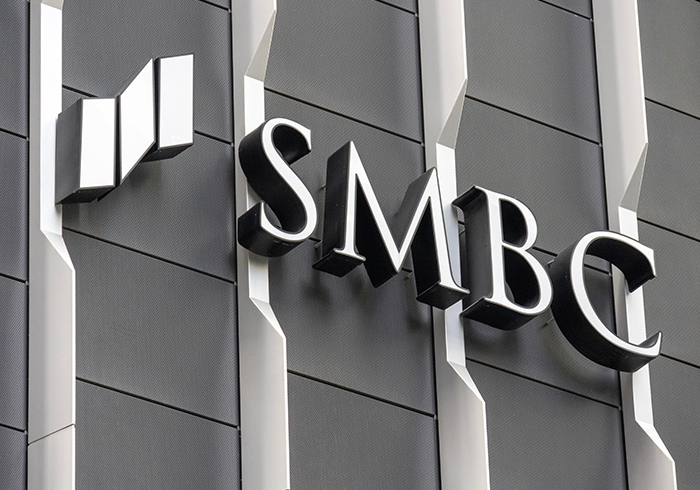SMBC is stepping up its focus on transaction banking products as it seeks to become a “one-stop solution” for trade clients and shrink low-profit assets.
The Japanese lender believes that ancillary fees from broader transaction banking services such as deposit-taking and foreign exchange will help boost its profitability.
“One of my aims is to change our business model from just a pure financer to the transactional,” Mitsuhiro Kawamura, SMBC’s head of trade finance, tells GTR.
“We would like to make this business more sustainable, and in order to do that, we also need to capture more ancillary business,” he says.
The strategy will help make SMBC’s trade finance business more scalable and “more attractive” to customers if the bank can provide a “one-stop solution”, Kawamura says. Transaction services the bank is looking to provide include “payment, collection, foreign exchange, settlement and liquidity management”, a spokesperson says.
As part of this shift, the bank is no longer seeking to boost the “top line” of trade finance lending volumes, Kawamura says. “We would like to make our business more profitable in various ways, and then if, as a result, we can increase the volume as well, that’s good. But increasing the volume without improving the profitability does not mean that much to us.”
Transaction banking revenue – including trade finance – in Asia could hit US$981bn by 2027, the consultancy McKinsey forecast last year, based on annual growth of 7%.
SMBC is a major player in trade finance both in its home market of Japan, where it competes primarily with MUFG and Mizuho, and across Asia. It also has a strong presence in emerging markets, including Africa, Latin America and the Middle East.
In 2023, SMBC set a target to slash ¥6tn (US$40.7bn) in risk-weighted assets by 2026, including “low-profit” assets in trade finance, project finance and a US leasing unit, in a bid to boost capital efficiency and return on equity (RoE), a spokesperson says.
Assets were re-allocated to global corporate and investment banking, as well as domestic sectors such as real estate and consumer finance, according to the bank’s annual reports.
In the financial year ending March 31, SMBC trimmed ¥5.1tn of risk-weighted assets, it said in an investor presentation.
Kawamura says that while the overriding aim is to switch focus from volumes to profitability, the approach of boosting its transaction banking capabilities is partly in response to Japan’s implementation of Basel 3.1 – also known as Basel 4 – capital requirements.
The regulatory reforms increased large Japanese banks’ lending buffers and, in some sectors, made them less competitive against international peers.
Kawamura says boosting ancillary business through a stronger focus on transaction banking is “one of the ways” to offset the impact of higher risk-weighted assets and maintain profitability, alongside measures such as using insurance.
As such, he doesn’t see a “significant impact” on trade finance.
“We knew that Japan is adopting Basel 4, so it did not happen in the short term. Of course, there are certain cases [where] we’re less competitive than other banks. So we saw that situation, but we had been building the business model based on that assumption,” he says.
SMBC joins the ranks of several large lenders that have broadened transaction banking product suites in recent years. Returns on traditional trade lending have ebbed as iterations of the Basel regulations introduced after the global financial crisis have required banks to put aside more capital.
“I think it’s the go-forward strategy for most of the banks, where you do have to lend to some extent to build the relationships, but then expect to be able to generate ancillary revenues to make trade lending more RoE-accretive,” says Minal Chotai, Crisil Coalition Greenwich’s head of financial resources.
Fees from transaction banking are essentially “free money” for banks because they demand little or no reserve capital and help deepen relationships with corporate customers, Chotai tells GTR.
Reduced secondary market activity
Reflecting its reduced focus on volumes, SMBC’s trade finance department has also significantly scaled back its secondary market activity.
Kawamura says the bank now rarely buys trade assets originated by other lenders, unless there is a clear relationship benefit or related ancillary business, although the SMBC spokesperson adds that the bank has grown the number of deals it originates as an arranger.
The change has taken shape over the last couple of years, Kawamura explains. “It took a little bit of time to shift our business model from the participation to the primary – it was [a] several years’ exercise. But as of now, majority of our business is primary, then the secondary business is very, very limited.”
The distribution strategy has also evolved in recent years, with the bank “not trying to distribute as much as possible”.
Kawamura became head of SMBC’s global trade finance department in April this year, relocating to Tokyo after almost five years with the bank in New York, where he headed up trade finance in the Americas.

He says the impact on SMBC’s trade business from whipsaw US tariff announcements, which threatened to upend supply chains, has been muted. Lower trade volumes may have been cancelled out by higher demand for financing as supply chains shift, he says.
Asked about risks facing trade finance over the medium term, Kawamura points to the possibility that fintechs that have disrupted retail lending will branch out into wholesale banking – a segment that until now has largely been the domain of banks.
At the moment, those fintechs generally cater to SMEs, but within the next five years, they may expand into wholesale banking. That means banks like SMBC can’t depend on continuing to dominate the banking market for large corporates. “It’s not happening really as of now, but probably we need to prepare for it.”
As the separation between retail and wholesale banking blurs, Kawamura says SMBC is trying to capture retail business in Asian growth markets, such as India, the Philippines and Vietnam, where it has acquired or expanded its stake in commercial lenders in recent years.
“In some cases, we are competing with the fintech companies because they can serve both the retail and wholesale. So we also need to do the same, basically, otherwise we are going to lose our share.”






